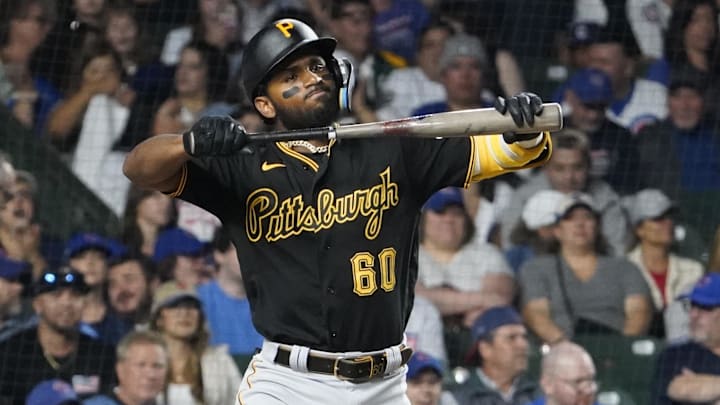Pittsburgh Pirates infielder Liover Peguero struggled mightily in September, but how can he avoid that in 2024?
The Pittsburgh Pirates gave Liover Peguero, one of the first players they acquired to start the rebuild, an extended look last year. His first handful of games went well. Through 129 plate appearances, Peguero was slashing .274/.323/.462 with a .336 wOBA, and 109 wRC+. Peguero had a mediocre 6.2% walk rate and 27.9% strikeout rate but hit for decent pop with six home runs and a .188 isolated slugging percentage.
But after early September, Peguero struggled. He would receive 84 more plate appearances, batting just .185/.214/.247. Austin Hedges, who many Pirates fans were so fed up with they booed him, hit .180/.237/.230. Peguero had just a 20 wRC+, meaning he was 80% worse than the league-average batter in this stretch. Peguero’s strikeout rate went through the roof to 36.9%, while his walk rate dropped to just 3.6%. But how can Pegeuro avoid this massive collapse at the end of the year?
The first thing Peguero needs to do is just become less aggressive. When Peguero was hitting well, he only had a 30.2% chase rate, which was better than average. While his 55.8% chase contact rate was below average, it was significantly better than his 45.8% chase contact rate from September 4th onward. He simply chased outside the zone far more often as well, with a 37.1% chase rate. This led to his swinging strike rate going from 12.8% to 16.8%.
Pitchers seemed to figure out some of Peguero’s weaknesses. Opposing arms threw a fastball nearly 50% of the time to him, but when Peguero went into his cold streak, he only faced a fastball 46.6% of the time. Meanwhile, he saw sliders 6.3% more often. There was a major change in how often he faced a change-up as well, going from a 12.4% rate to just 7.8%.
The second thing Peguero needs to work on is lifting the ball more frequently. Peguero learned how to hit the ball harder. Even though he had a horrendous end to the season, his exit velocity rose from 88 MPH to 91.4 MPH, and his hard-hit rate went from 35.7% to 46%. That’s the difference between going from around the 20th percentile to the 80th percentile of exit velocity and the 20th percentile to the 75th percentile of hard hit rate.
However, his ground ball rate went from 47.5% to 58%. Meanwhile, his line drive rate dropped from 21.3% to 16%, and his flyball rate fell from 31.3% to 26%. This caused his barrel rate to fall by about 5%, from 7.1% to just 2%. Sure, a 7.1% barrel rate isn’t great, but it’s the difference from being below the 5th percentile to being around the 40th percentile.
Peguero didn’t lack walks or had a boatload of strikeouts in the minor leagues, either. After a rough first two weeks to start the season, Peguero then went on to have a .846 OPS, .375 wOBA, 128 wRC+, a strikeout rate of just 17.1%, and walk rate clocking in at 10.8%.
Peguero is still only 22 and won’t turn 23 until the very last day of the year, December 31st. He’s far from the first and will certainly not be the last player who comes to the Majors and struggles against a breaking ball. I’m not saying that Peguero will have the plate discipline of Ted Williams combined with the plate coverage of Tony Gwynn, but he can still have the potential to replicate what he did through his first handful of games. Saying he needs to lay off the breaking stuff is easier said than done, but baseball is called the game of adjustments for a reason, and I believe he can make said adjustments.
